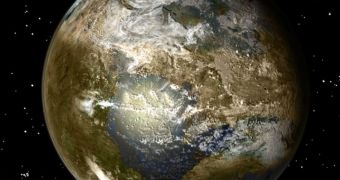According to the conclusions of a new study by experts at the Massachusetts Institute of Technology (MIT), it would appear that the end-Permian extinction event – which occurred about 252.2 million years ago – happened a lot faster than originally established.
Currently known informally as the “Great Dying,” this event is the only known extinction in history that affected insects, and is widely believed to have represented the only time in Earth's 4.5-billion-year history when life came within an inch of being completely eradicated.
Experts have thus far failed to come to an agreement as to what may have caused the devastating event. Some believe that numerous volcanoes erupted at the time, accompanied by massive earthquakes and other tectonic events. Others believe that an asteroid was responsible, though the possibility is remote.
Others still believe that the event was caused by the rapid depletion of oxygen reserves in the world's oceans. The extinction killed off about 90 percent of all marine and terrestrial species, and affected every single ecosystem on the planet.
In the new study, the MIT team did not try to establish the exact cause of the end-Permian event, but rather to determine how it unfolded. The thing that became immediately apparent was that the extinction took place much faster than experts originally established.
The group estimates that the Great Dying took only 20,000 years to complete its work after it started. Though this may seem like a lot to us, it is merely a moment in geological time. Interestingly, it coincided with a massive build-up of carbon dioxide in the planet's atmosphere.
Perhaps this can help explain why land and marine species were affected at the same time. Global warming and oceanic acidification represent a powerful mix even now, and they may have had devastating consequences on species living on Earth during the last days of the Permian Epoch.
By taking their research one step further. The investigators determined that the rate at which CO2 was deposited in the atmosphere during the extinction event was a bit smaller than that at which humans are eliminating similar gases into the air right now.
Wildfires may have contributed to the extinction event as well, researchers say, by releasing even more carbon dioxide in the air, and further driving climate change. Details of the new study were published in this week's issue of the top journal Science.
“People have never known how long extinctions lasted,” explains research scientist Sam Bowring, who holds an appointment as the Robert R. Schrock professor of Earth, atmospheric and planetary sciences (EAPS) at MIT.
"Many people think maybe millions of years, but this is tens of thousands of years. There’s a lot of controversy about what caused [the end-Permian extinction], but whatever caused it, this is a fundamental constraint on it. It had to have been something that happened very quickly,” he concludes.

 14 DAY TRIAL //
14 DAY TRIAL //